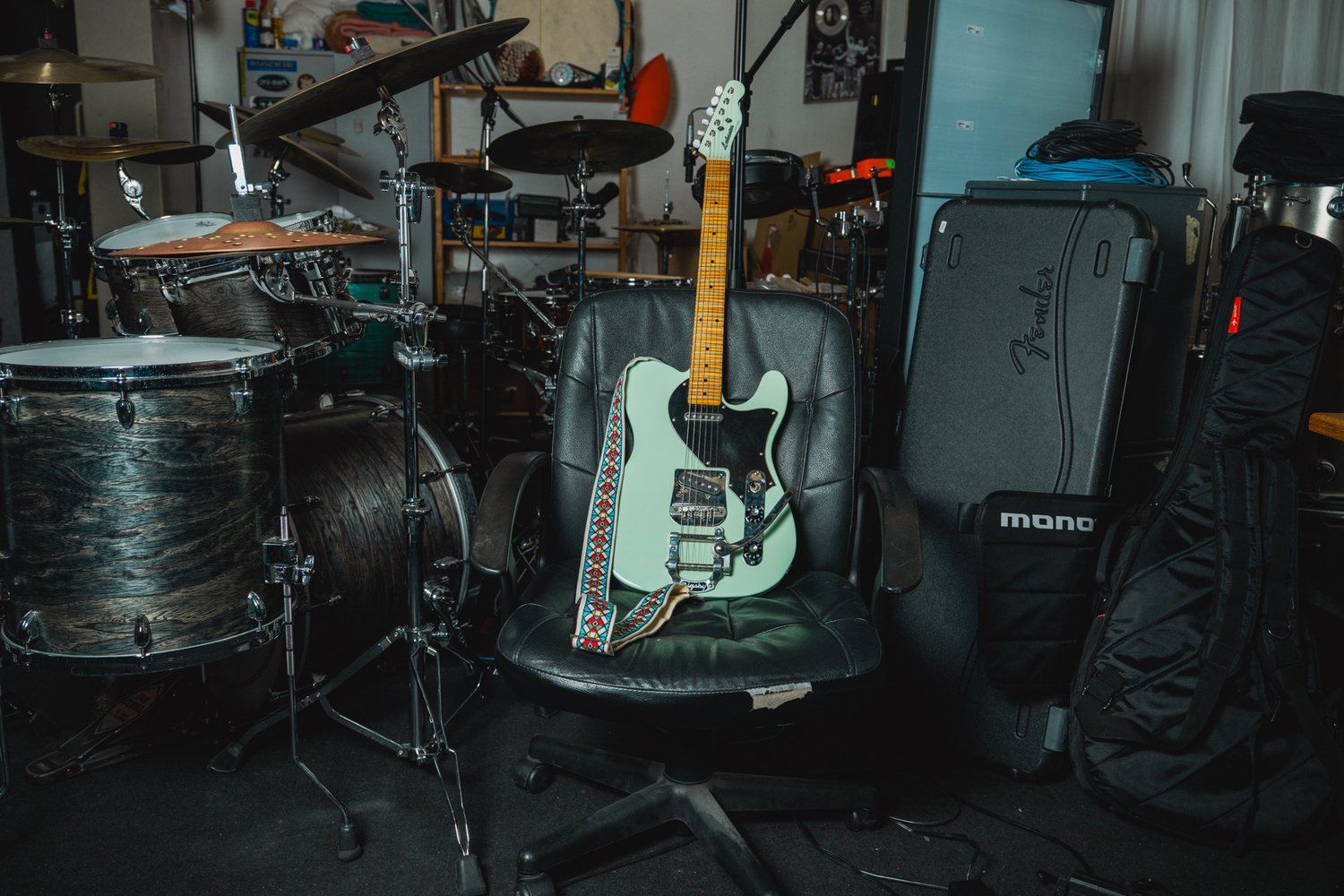What types of guitars exist?

Handbook for music lessons
We receive a wide range of questions about music lessons every day. We answer them together with experienced teachers in our handbook for music lessons. Over the next few weeks, we will be presenting topics from articles in the handbook here in the blog.
Many pupils don't know exactly what type of guitar they actually want to learn or can't name it, even though they actually have an idea. In this blog article, we introduce you to the different types of guitar and their characteristics.
You can also find out more in the Hanbuch article Learn to play the guitar for adults.
Acoustic guitars
With acoustic guitars, the sound is produced purely mechanically and you don't need a pickup, amplifier or other additional electrical devices. The sound is produced by triggering string vibrations with the strumming hand, for example by plucking or "strumming". The vibrations of the strings are transmitted to the top and the body via the bridge and thus amplified.
Classical guitar
Acoustic guitars also include the classical guitar (also known as the concert guitar, Spanish guitar or flamenco guitar). Compared to the acoustic guitar and the electric guitar, it has a wider fingerboard. The lower strings (E, A, D) are made of nylon silk and wound with copper or silver wire. The three higher strings (G, B, E) are made of nylon. Flamenco or Spanish guitars are not very different from classical guitars. Sometimes, depending on the playing style, the string action is lower. This allows the guitar to be played more "perscussively". In some cases, the types of wood used also differ.
With the classical guitar you can play classical music, Spanish music but also campfire songs with chords.
Here you can see a video example. Lotti Szalai teaches classical guitar in Basel .
Western guitar
Western guitars are basically constructed in a similar way to classical guitars, but are nevertheless very different in terms of some construction details and sound.
They have a narrower neck and the strings are made of steel. The bridge is also constructed differently, which changes the way in which the vibrations of the strings are transmitted to the body. The acoustic guitar therefore sounds more metallic and harder than a classical guitar.
There are now various body sizes and shapes that change the tone of the guitar. Basically, the larger the body, the louder the instrument, because it offers more resonance. But the quality, saddle, tuners, bridge and the types of wood used also determine the sound of the respective instrument.
Western guitars are very well suited to playing modern music styles such as pop, folk, rock or blues. Oasis, Bob Dylan and Tom Petty are famous examples of a typical acoustic guitar sound.
Electric guitar
The electric guitar has an electric sound pickup. In contrast to the acoustic guitar, it does not need an acoustic sound box to amplify the string vibrations and can therefore be distinguished from the electro-acoustic guitars, which have a resonating body (see above).
Because the external lines are not relevant to the sound of the guitar, there are a variety of different shapes, some of which offer advantages in terms of playability. In addition, a wide variety of sounds can be produced with additional devices such as guitar amplifiers or effects.
Because guitarists in jazz were no longer able to assert themselves against wind instruments or even a single piano due to the low volume of the acoustic guitar, the demand for more volume became ever greater. The electric guitar gradually developed from the acoustic guitar. This is why the term "electric guitar" is used in a broader sense to cover the entire range of acoustic (jazz) guitars with an attached pickup on the one hand and guitars without a resonator on the other. Between these two extremes, there are numerous hybrid forms that have survived to this day and are usually referred to as "semi-acoustic" electric guitars or semi-resonant guitars. These are not to be confused with electro-acoustic guitars.
Depending on the model, amplifier and effects, a variety of different musical styles can be played with an electric guitar. From jazz and pop to rock and heavy metal.
Famous electric guitar legends include Jimi Hendrix, Eric Clapton, Jeff Beck, B. B. King, Steve Vai and Angus Young.
If you also want to learn to play the guitar, we will be happy to help you and answer any questions you may have. Our guitar partners in various cities will give you expert advice if you want to buy or rent a guitar
We will continue to add to the handbook for music lessons in the future. If you have any questions about music lessons, please feel free to send them to us. Maybe you can even give us the topic for the next article?
You might also be interested in these articles:
Manual:
Learn to play the guitar for beginners
Learn to play the guitar for adults
Learn to play the guitar for children
Rent a guitar
Learn jazz guitar
Learn to play the blues guitar
Learning electric guitar for beginners
Blog:
Is it ever too late to learn the guitar? An analogy.
Acoustic guitar or electric guitar?
Our manual is ready!
Similar Posts

Online lessons with children
To kick off our partnership with the platform for children's programming wow-wow, Michael Städler told us in the last blog post on this topic what it means to him to teach children. Today, Benjamin Buettler shares how he goes about his pian

These works should know all fans of classical music!
Under the motto "This music is unheard and heard", the FemaleClassics classical music festival will be held in Zurich for the first time in June. The festival programs exclusively works by female composers, because their music is heard far

Transverse flute or magic flute?
From now on we also offer transverse flute lessons on Instrumentor. Avital Cohen tells us what this instrument is all about. Many legends tell about the beauty of the sound of the flute and its mystical power. In some cultures, it is even b
